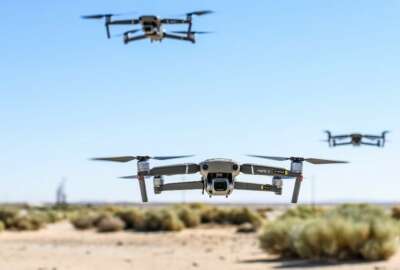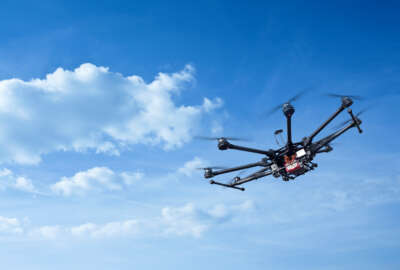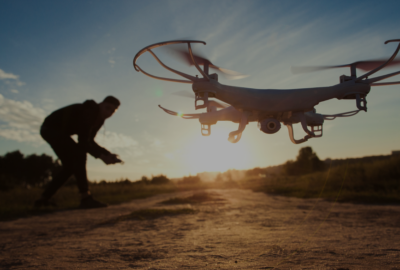As a proposal to create a separate Army drone branch advances in the House, Army leaders continue to push back against the idea.
Gen. James Rainey, who leads the Army Futures Command, said it is “too early” for the service to establish a drone corps.
“I think unmanned aerial systems are going to come to bear at echelon. I think individual soldiers [need to be able] to employ them just like they employ their weapon. So 11 Bravos, I think, the tanks should be able to have a robot sitting next to him that can launch UAS. I think every maneuver person is going to need them. They have huge sustainment implications,” Rainey said during the Center for Strategic and International Studies event on Monday.
Given the existing occupational specialties for enlisted soldiers and warrant officers that focus on UAS and various drone-related programs and training, the service should prioritize integrating the technology into “every formation, at every echelon,” said Rainey.
“I don’t know that it’s going to warrant its own branch. And certainly, I’d say it’s too soon for that. The bigger thing is getting UAVs into our formation at echelon right now. We [need to] have good requirements and good acquisition approaches for UAVs at echelon. We need to stop buying a thing and buy a capability,” said Rainey.
Gen. James Rainey is the latest Army official to push back against the House Armed Services Committee’s proposal to create a drone corps.
The committee wants the new branch to serve as a command center for all drone-related activities. It would help integrate drone systems across the service, conduct research, development and testing of those systems and provide personnel with specialized training in such aircraft.
Rep. Rob Wittman (R-Virginia), chair of the HASC Subcommittee on Tactical Air and Land Forces, has long advocated for better counter-UAS capabilities. During a hearing in March, he further pushed the idea, saying that “it is time to give serious consideration” to setting up a drone corps within the Army.
“Unlocking the full potential of unmanned platforms for the Army will require soldiers to develop specialized skills and a deep understanding of various associated technologies. A drone corps may better lend itself to allowing the broad array of expertise required to mature within the Army and for these systems’ unique capabilities to grow beyond their role primarily as enablers to the current combat arms branches,” said Wittman.
Army Undersecretary Gabe Camarillo, however, said creating a new institutional structure would distract from the service’s current efforts to bring the technology to soldiers and adopt it at scale.
“I think the institutional implications of it, to me, are secondary at this point as opposed to figuring out how we’re going to employ the technology and what technology works the best. It’s important, in my view, to get after giving units these [commercial off-the-shelf] UAS capabilities to let them experiment. I want to better understand the [tactics, techniques and procedures] about how they’re going to employ them at different echelons and to be able to understand how that affects the way that our formations will fight,” Camarillo said last month.
Retired Army Maj. Gen. John Ferrari, a senior fellow at the American Enterprise Institute, argues that drone warfare is moving fast and the service needs to be able to organize around those weapon systems to keep pace with the technology.
“Giving drones to the old branches that are going to worry about whether they’re now competing for resources may not be the best idea. What you want to do is you want to innovate not just the hardware, but the tactics. So having somebody that’s got resources so it’s not competing for resources from the people it’s trying to displace. If it was its own branch with its own funding to do procurement and acquisition and operations, then it can show up to the formations and go, ‘Look, here’s what we got,’ as opposed to, ‘We need to take money from the helicopter program in order to do it,’” Ferrari told Federal News Network.
“What I would say is the Army is not at risk of moving too fast. It’s at risk of moving too slowly on this.”
The House Armed Services Committee adopted the measure last month but it will need to pass the rest of the House and Senate to make it into the final defense bill.
Copyright
© 2024 Federal News Network. All rights reserved. This website is not intended for users located within the European Economic Area.






